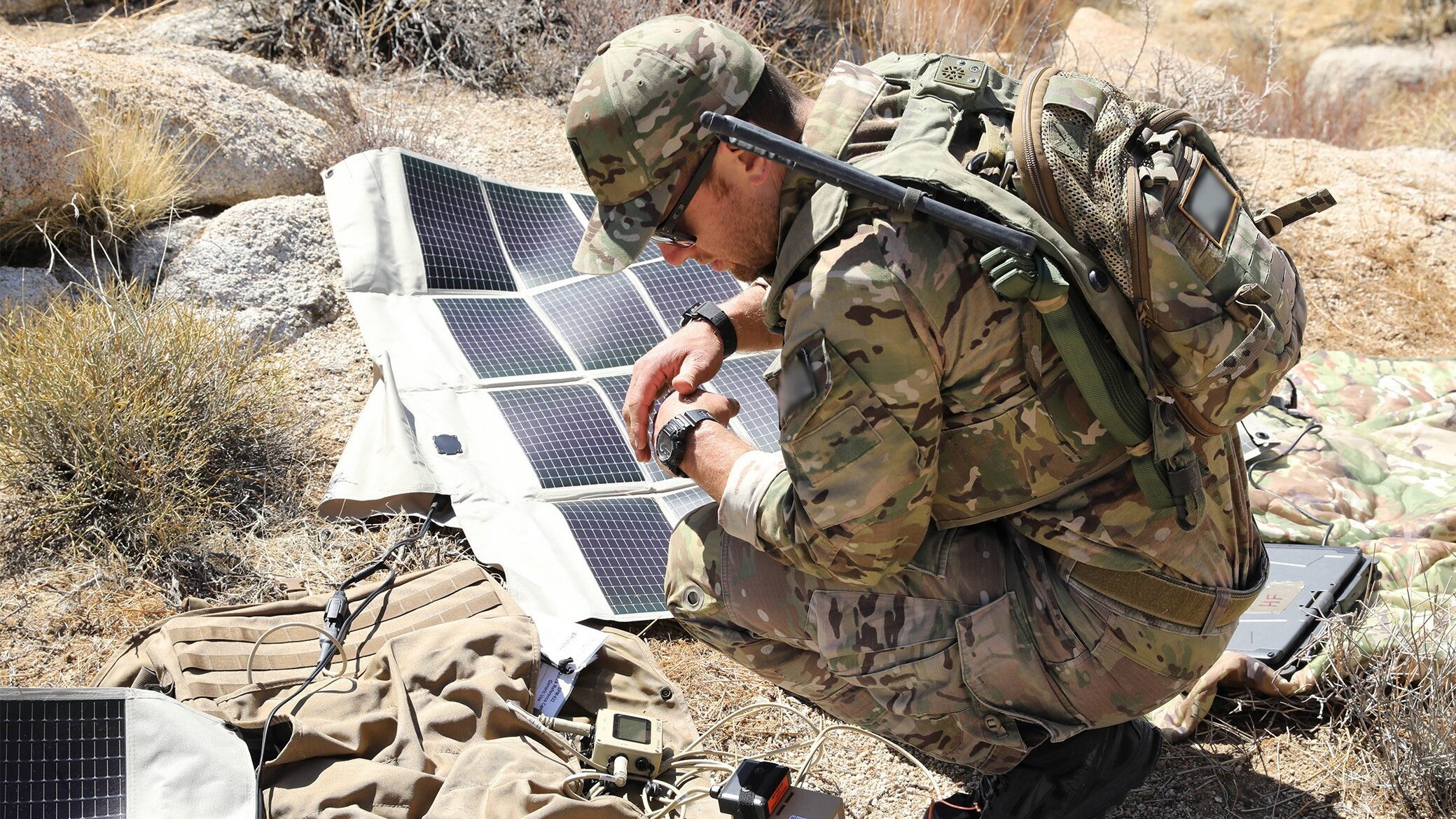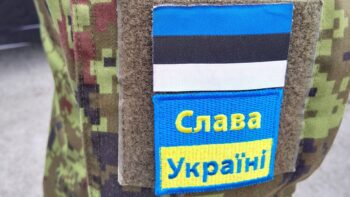
A U.S. Army Green Beret with 1st Special Forces Group (Airborne) sets up solar panels for operational communications at the National Training Center, Fort Irwin, California. (U.S. Army photo by Pfc. Lisa-Marie Miller)
WASHINGTON — As the Army seeks to be more energy efficient between fiscal 2023 and 2027, officials with the service’s C5ISR Center told Breaking Defense they’re working on a plan to make the transition, whether its to installation microgrids or the planned electrified vehicle fleet, smoother and smarter.
The Army’s ambitious climate strategy, which it estimates will cost upwards of $6.8 billion over five years, follows three lines of efforts: installations, acquisition and logistics and training.
According to the strategy’s implementation plan, released Oct. 5, $5.2 billion of that will go to the installation line of effort, wherein the service wants to field fully electric non-tactical vehicles and reduce greenhouse gasses. The Army also wants to operationalize 55 microgrids on its installations (20 microgrids by fiscal 2024, 15 more by FY26 and then 20 more in FY27) with a total cost of $1.6 billion. (The training portion is expected to cost far less.)
RELATED: New Army Climate Strategy Aims For Microgrids And Tactical Electric Vehicles
The service is currently working on implementing the first set of those tactical microgrids, which will allow the service to “interconnect” power equipment in an “interoperable and smart way,” Marnie Bailey, power division chief at the Army’s C5ISR Center, told Breaking Defense in an interview this week.
“You’ll have things like generators and power distribution boxes, which are kind of like your breaker boxes at your house, and then your loads,” Bailey said. “And you want to be able to connect those together in a way that’s simple for the users and that you can optimize the use of your energy, your available power to meet your loads. So that’s things like being able to turn on and off your generators or connecting kind of energy storage systems to maximize your power.”
She added that the development of the tactical microgrid standard (TMS) has underpinned a lot of the research the Army has been doing in that area. TMS is an interoperability standard that allows devices to plug and play together, and that’s what the Army wants to do with its power systems, Mike Gonzalez, expeditionary power and environmental controls branch chief at the C5ISR Center, added.
Over the next year, the Army wants to explore how to do active load management (things that consume power, like electronics) through the use of the TMS, which can monitor the loads and see how much power installations or bases are consuming on a regular basis, whether the facilities are stateside or in far-flung regions.
“And then as you start having issues with resupply… or you have to operate in a disconnected mode, where you don’t have enough power for all your devices, you can start leaving just your critical loads on…this is a space that makes sense both operationally with your tactical Army and also…with your CONUS installations,” in terms of having energy resiliency, Bailey said.
The C5ISR Center this fiscal year is also working with the service’s ground vehicles systems center to develop prototypes for a similar plug-and-play system for “having the vehicles and electric vehicles and all that work together in harmony,” Gonzalez said.
“So as part of that, we’re looking to bring in the electric vehicles and hybrid vehicles, because that was a part of that end system, that end architecture that we look to see fielded,” Gonzalez said. “And so the work we’re doing now is getting after (a) how we make sure that vehicles can all plug and play together and then (b) how do we add optimization to that?”
According to the Army’s climate plan, the service plans to field an all-electric light-duty-non-tactical vehicle fleet by 2027 and is aiming for an all-electric non-tactical fleet overall by 2035.
The Army wants to reap the benefits of the technologies and, at the same time, make sure the transition to these new concepts are seamless for soldiers. As part of that, the service is engaging in “soldier touchpoints” to get feedback on what is and isn’t working. Those soldier touchpoints are key to making sure the Army doesn’t spend years on stuff that’s not performing in real situations, Gonzalez said.
As to how the Army sees in the opportunities space over the next fiscal years coming up, both Bailey and Gonzalez summed it up in three words: intentionality, flexibility and maximizing options. It also opens up opportunities for incorporating things like artificial intelligence in the future for things like controls, Bailey added, but the focus right now remains on implementing the interoperability standards into equipment.
“But as we get more equipment with more ability to generate and record data on its operations, then that data can be used in things like AI controls,” she said. “So that’s an interesting space and I’d say we’re laying the foundation for things like that.”
Taking aim: Army leaders ponder mix of precision munitions vs conventional
Three four-star US Army generals this week weighed in with their opinions about finding the right balance between conventional and high-tech munitions – but the answers aren’t easy.


























